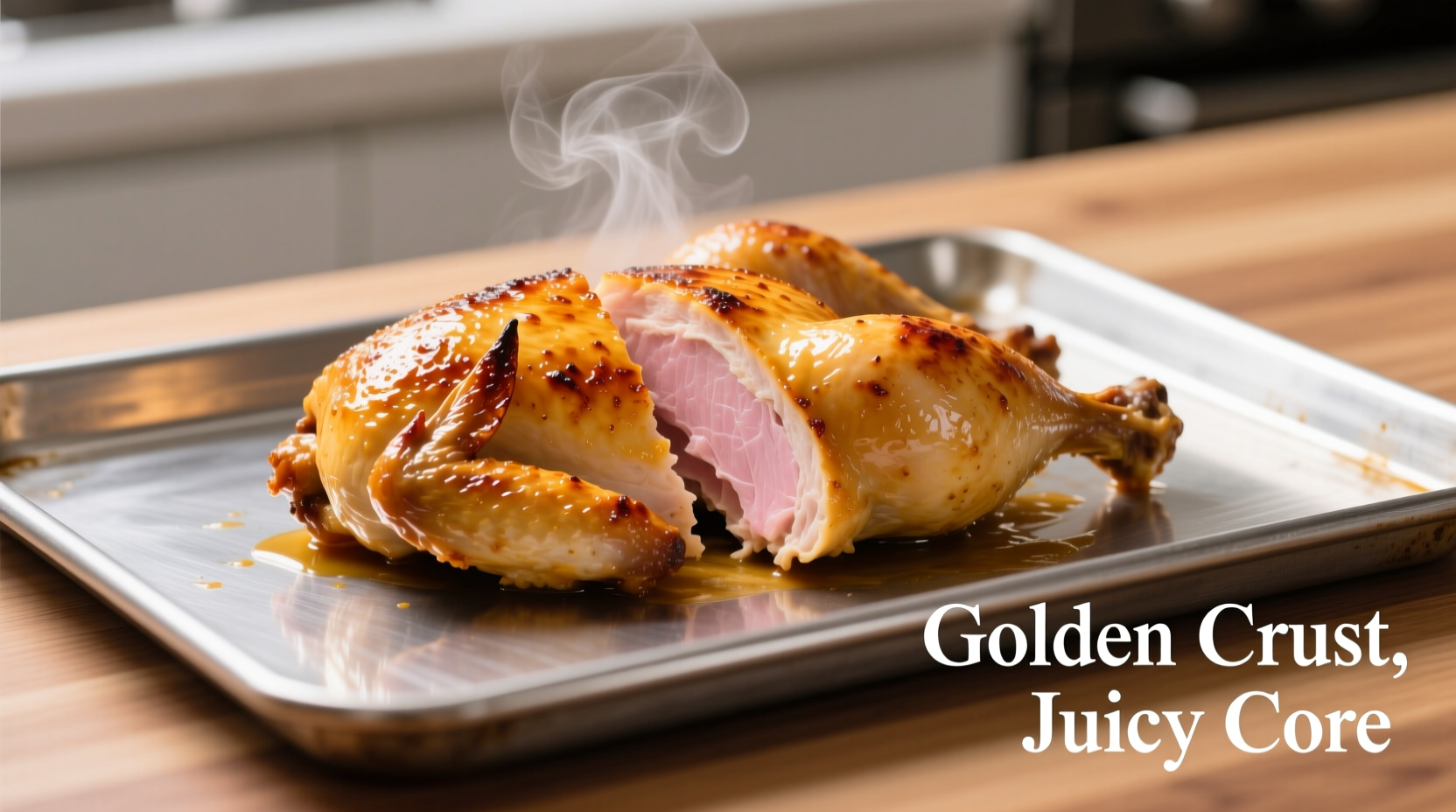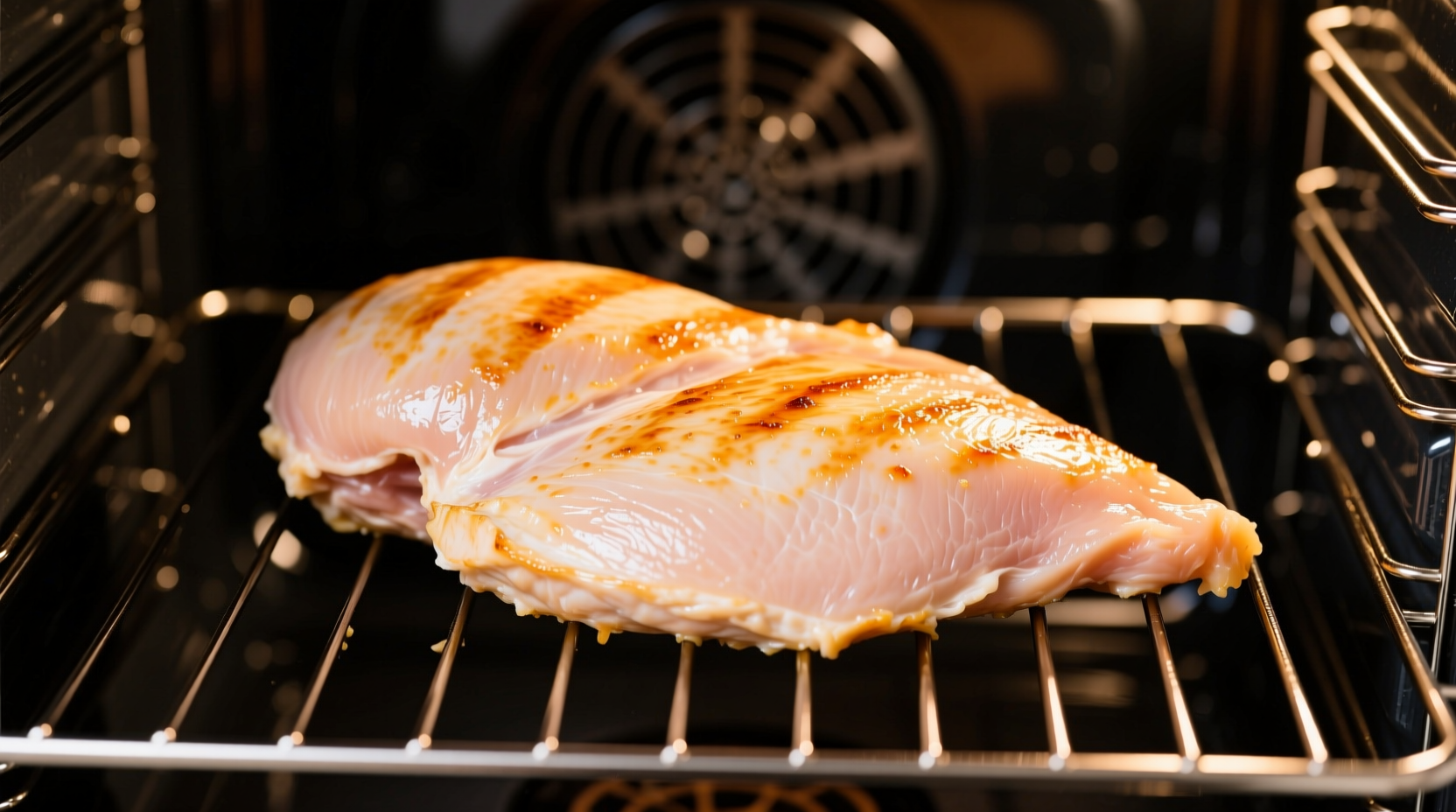Chicken breasts should cook in a preheated oven at 375°F (190°C) for 20-30 minutes, depending on thickness. The critical factor is internal temperature—always cook to 165°F (74°C) as measured by a food thermometer in the thickest part. Thinner cuts (under 1 inch) typically take 20-22 minutes, while thicker cuts (1.5+ inches) require 25-30 minutes.
The Perfect Oven-Baked Chicken Breast Formula
Nothing ruins dinner plans faster than dry, overcooked chicken or unsafe undercooked poultry. As a professional chef with experience in both Michelin-starred kitchens and home cooking education, I've perfected the timing formula that works every time. The key isn't just minutes on the clock—it's understanding how thickness, oven temperature, and resting time interact to deliver juicy, safe chicken.

Why Standard Timing Guidelines Fail
Most generic recipes say "25 minutes at 400°F" but fail to account for critical variables. According to USDA Food Safety and Inspection Service data, chicken must reach 165°F internally to eliminate harmful bacteria like salmonella. However, oven temperatures vary by as much as 25°F between models, and chicken breast thickness ranges dramatically.
| Thickness | 375°F (190°C) | 400°F (204°C) | 425°F (218°C) |
|---|---|---|---|
| Under 1 inch (2.5 cm) | 18-22 minutes | 15-18 minutes | 12-15 minutes |
| 1-1.5 inches (2.5-3.8 cm) | 22-26 minutes | 18-22 minutes | 15-18 minutes |
| Over 1.5 inches (3.8+ cm) | 26-30 minutes | 22-26 minutes | 18-22 minutes |
Always verify with a thermometer—these times are starting points. Insert the probe into the thickest part without touching bone.
Your Step-by-Step Cooking Timeline
Preparation Phase (5 Minutes)
- Temperature equalization: Remove chicken from refrigerator 20 minutes before cooking (per American Institute of Baking research on protein cooking)
- Pat dry thoroughly: Moisture creates steam, preventing proper browning
- Season evenly: Salt penetrates better when applied early
Cooking Phase (20-30 Minutes)
- Preheat oven to 375°F (190°C) with rack in center position
- Place chicken on foil-lined baking sheet or in oven-safe skillet
- Insert oven-safe thermometer if available
- Set timer for 15 minutes (for standard 1-inch thickness)
- Check temperature at 15 minutes, then every 2-3 minutes thereafter
Critical Temperature Milestones
- 145°F (63°C): Protein fibers begin to contract significantly (start checking frequently)
- 150°F (66°C): Carryover cooking begins—remove from oven
- 165°F (74°C): Target temperature reached during resting
Avoiding the #1 Cooking Mistake: Overcooking
Research from the Culinary Institute of America shows chicken breast loses 20% of its moisture between 160°F and 170°F. The solution? Remove chicken at 155-160°F and let carryover cooking during resting achieve the safe 165°F.
Resting Protocol (Non-Negotiable!)
- Cover loosely with foil
- Restate 5-10 minutes (time varies by thickness)
- During this phase, internal temperature rises 5-10°F while juices redistribute
Skipping this step causes up to 30% more moisture loss when cutting, according to University of Minnesota Food Science Department studies on protein structure.
Professional Techniques for Foolproof Results
Thickness Equalization Method
For uneven breasts, place between parchment paper and gently pound thicker portions to match thinner areas. This ensures even cooking—a technique used in professional kitchens worldwide.
Temperature Monitoring Strategy
Use an instant-read thermometer (Thermapen recommended) rather than relying on timers alone. The FDA's Food Code 2022 emphasizes thermometer use as the only reliable method for determining poultry doneness.
Visual Doneness Indicators
While thermometers are essential, these visual cues confirm proper cooking:
- Juices run clear, not pink
- Meat feels firm but yields slightly when pressed
- No translucent areas when cut at thickest point
Troubleshooting Common Problems
Problem: Chicken is Dry Despite Proper Timing
Solution: You likely removed it at 165°F instead of allowing carryover cooking. Remove at 155-160°F and rest properly. Also ensure you're not using an oven thermometer—many home ovens run hotter than displayed.
Problem: Uneven Cooking (Burnt Edges, Raw Center)
Solution: Rotate the baking sheet halfway through cooking. For thicker breasts, consider tenting with foil after 15 minutes to prevent over-browning while interior finishes cooking.
Problem: Chicken Sticks to Pan
Solution: Ensure the pan is properly preheated before adding oil, then the chicken. Wait until a golden crust forms (about 5 minutes) before attempting to move it.
Frequently Asked Questions
Can I cook frozen chicken breasts directly in the oven?
Yes, but increase cooking time by 50% and check temperature frequently. The USDA Food Safety and Inspection Service recommends adding 1.5 times the normal cooking duration for frozen poultry. Always verify 165°F internal temperature.
How do I prevent chicken breast from drying out?
Brine chicken in 1/4 cup salt dissolved in 4 cups water for 30 minutes before cooking. This helps the meat retain moisture during cooking. Also, never cook beyond 165°F internal temperature and always allow proper resting time before slicing.
Is it safe to cook chicken at lower temperatures for longer?
The USDA recommends against cooking poultry below 325°F due to increased time spent in the temperature danger zone (40°F-140°F). For food safety, maintain oven temperature at 350°F or higher to ensure rapid passage through this zone.
How can I tell if chicken is done without a thermometer?
While a thermometer is essential for safety, visual indicators include clear juices when pierced, firm but yielding texture when pressed, and no pink areas in the thickest part. However, color alone isn't reliable—some chicken appears done before reaching safe temperatures.











 浙公网安备
33010002000092号
浙公网安备
33010002000092号 浙B2-20120091-4
浙B2-20120091-4